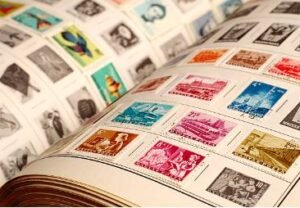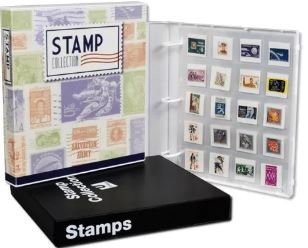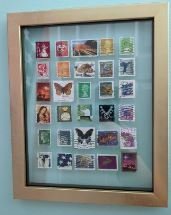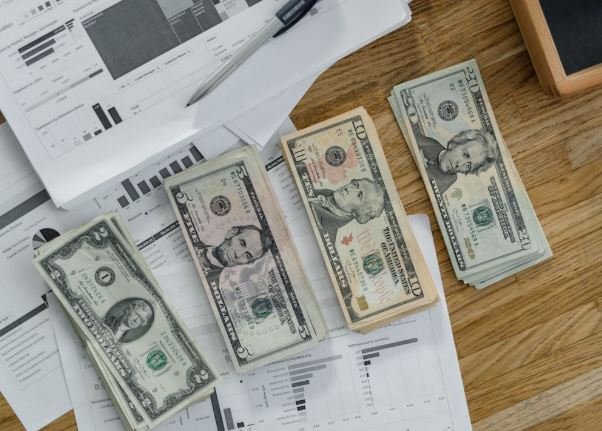Stamp collecting, or philately, is a hobby that opens up a world of history, culture, and art. But beyond the stamps themselves lies a rich story—each stamp represents a piece of history, a time, a place, and an event. If you are passionate about stamps, understanding their history can add depth and meaning to your collection. However, the vast amount of information can sometimes be overwhelming. In this guide, we will show you how to research the history of stamps, dive into their fascinating backgrounds, and—most importantly—help you avoid getting lost in the details.

Why Researching the History of Stamps Matters
Before we dive into the practical steps of how to research the history of stamps, it’s important to understand why researching their history is so valuable. Stamps are not just postage; they are miniature works of art and tangible representations of historical events, people, and places. Researching their history adds context and can even influence their value, rarity, and appeal.
Understanding the history of a stamp helps you:
- Appreciate the Story: Every stamp has a backstory that can enrich your collection. By learning about the event, person, or place a stamp commemorates, you gain a deeper connection to it.
- Identify Rare Variants: Many stamps have printing errors, limited editions, or variations that make them valuable. Knowing the history of a stamp can help you spot these rare gems.
- Ensure Accurate Information: There is a lot of misinformation in the world of stamp collecting. Accurate research helps you avoid buying stamps with false histories or overestimated values.
- Enhance the Value: A well-researched stamp is often worth more. Understanding its historical significance can help you assess its true value in the market.
With these benefits in mind, let’s explore how to research the history of stamps without getting bogged down by irrelevant details.
Step 1: Start with Reliable Sources
The first step in how to research the history of stamps is finding reliable sources. When you’re just starting out, it’s easy to get overwhelmed by the sheer amount of information available online and in books. It’s crucial to use authoritative sources to ensure that the information you gather is accurate.

Here are some trusted resources for researching stamps:
- Stamp Catalogs: These are the go-to reference books for collectors. Catalogs like the Scott Standard Postage Stamp Catalogue or the Michel Catalogue provide detailed information about stamp issues, including their historical context, printing variations, and estimated values.
- Philatelic Libraries: Many philatelic societies and libraries house in-depth research materials about stamp history. Websites like the Royal Philatelic Society or American Philatelic Society can point you toward valuable academic resources.
- Online Databases: Websites like StampWorld, Colnect, and Philatelic Database offer extensive digital catalogs and stamp details. These resources can be very helpful in finding out specific information about rare stamps.
- Auction Houses: When rare stamps are sold, auction houses often provide detailed descriptions and historical context. Examining past auction results can give you insight into the history and value of specific stamps.
Step 2: Focus on the Stamp’s Design and Issuing Country
One of the most effective ways to research the history of stamps is by focusing on the design and the country that issued it. The design often tells a story in itself, reflecting the event, person, or place the stamp was issued to commemorate.
- Design Elements: Many stamps feature iconic symbols, landmarks, or portraits that provide a clue to their historical significance. Researching the symbolism behind these designs can open doors to fascinating historical events. For instance, a stamp depicting the Statue of Liberty could lead you to learn about its unveiling or the U.S. immigration process.
- Issuing Country: Researching the country of origin is another great way to uncover the history behind a stamp. Understanding the political, social, or economic climate during the time a stamp was issued can reveal much about the historical event or person commemorated.
Step 3: Look for Historical Context
Once you have a stamp in hand and you know where it’s from, you need to dive into its historical context. This is one of the most enjoyable—and sometimes challenging—parts of how to research the history of stamps. The goal here is to place the stamp within the broader timeline of world events.
- Time Period: Look at the year the stamp was issued. What major historical events occurred during that time? A stamp issued during the end of World War II, for example, might symbolize peace and recovery, whereas a stamp from a more recent era could reflect technological advances or political change.
- Commemorative Themes: Many stamps are issued to celebrate anniversaries, political milestones, national holidays, or the lives of important figures. Researching these themes can provide a rich narrative for your stamp collection. For example, stamps issued to commemorate the Moon landing will have an entirely different context than stamps celebrating local flora and fauna.

Step 4: Avoid Getting Lost in the Details
One of the challenges when researching the history of stamps is not to get lost in the overwhelming number of details. Stamp research can become so intricate that you might start getting bogged down by irrelevant facts or technical information. Here’s how to stay on track:
- Stick to Key Themes: Focus your research on the essential historical context of the stamp. Ask yourself: What was this stamp meant to commemorate? Which historical figure or event is it related to? By staying on course with these key questions, you will avoid drowning in unnecessary details.
- Use the Right Level of Detail: Depending on your interest and knowledge level, you might want to focus on basic facts initially, such as the issuing date and country. As you become more experienced, you can dive deeper into the specifics like printing errors, rare variations, or market history.
- Don’t Overwhelm Yourself with Too Many Sources: While it’s tempting to pull from multiple online databases or library references, this can sometimes lead to conflicting information. Start with one or two reputable sources, and use them to build a coherent history of your stamp. Once you’re more experienced, you can begin cross-referencing.
Step 5: Join a Philatelic Community
One of the best ways to get guidance on how to research the history of stamps is by joining a philatelic community. Whether online or in person, stamp collectors and experts can offer tips, share resources, and help you avoid common mistakes. Being part of a community also gives you access to discussions, events, and seminars that can deepen your understanding of stamps’ historical contexts.
Step 6: Keep Track of Your Findings
As you research the history of stamps, it’s important to organize and document your findings. Keep a record of the sources you’ve used, the information you’ve gathered, and any relevant historical background. This will allow you to trace back your steps if you need to verify anything in the future.

For stamp collectors and philatelic enthusiasts, international stamp shows represent some of the most exciting events on the calendar. These grand exhibitions bring together collectors, dealers, exhibitors, and experts from all over the world to celebrate the art, history, and hobby of stamp collecting. Whether you’re a seasoned collector or a newcomer looking to immerse yourself in the world of stamps read more.
Conclusion
How to research the history of stamps can seem like a daunting task, especially given the sheer volume of information available. However, by focusing on reliable sources, understanding the historical context, and avoiding getting bogged down by excessive details, you can uncover a wealth of fascinating stories and valuable insights into your collection. Remember, each stamp you collect has its unique history, and understanding that history will enrich your experience as a collector and deepen your connection to the hobby.
By following the steps outlined in this guide, you’ll not only avoid getting lost in irrelevant information but also gain a deeper appreciation for the rich history that each stamp represents. Happy researching!




